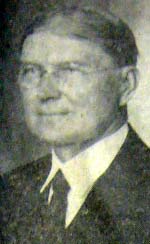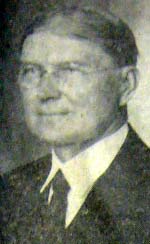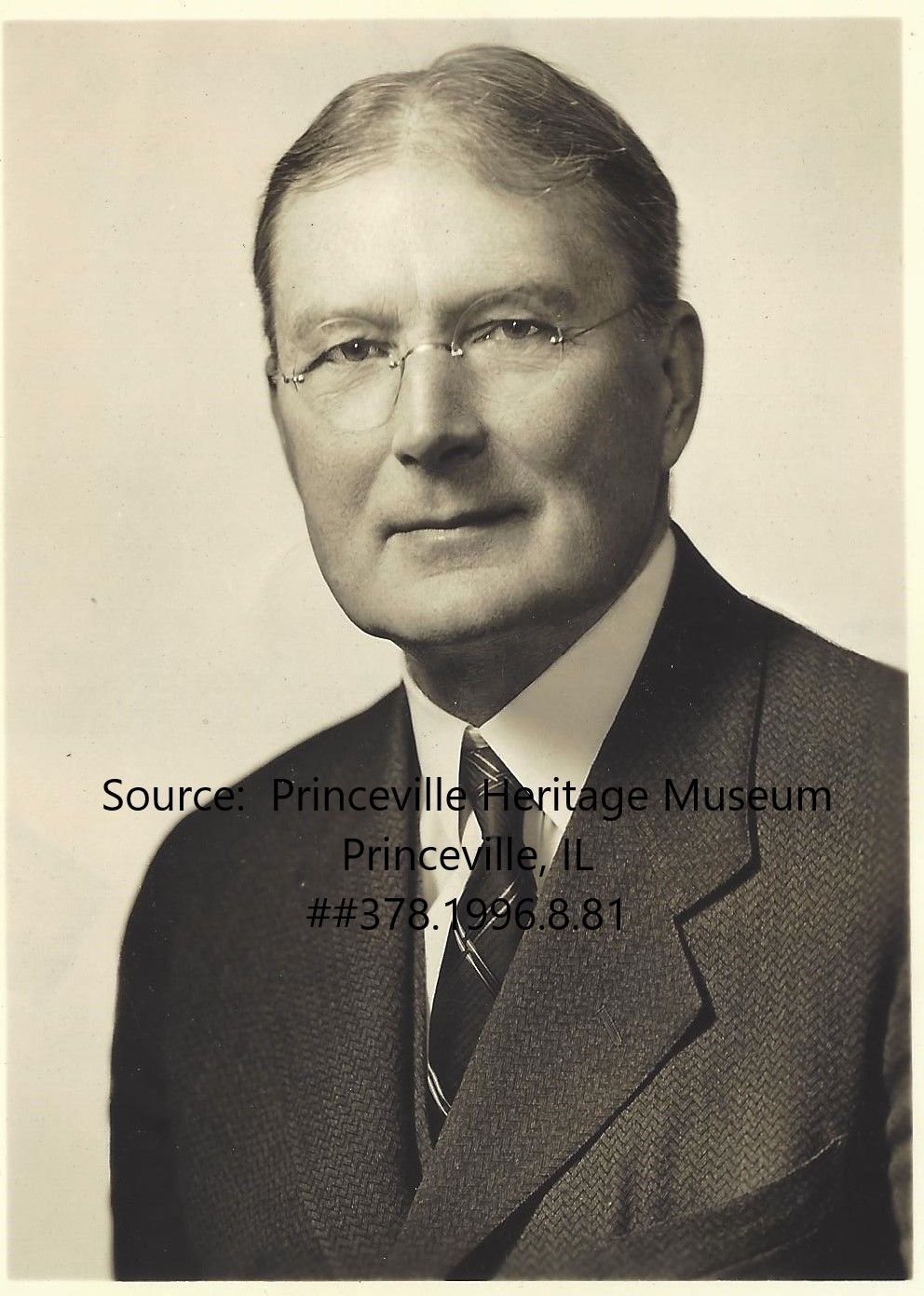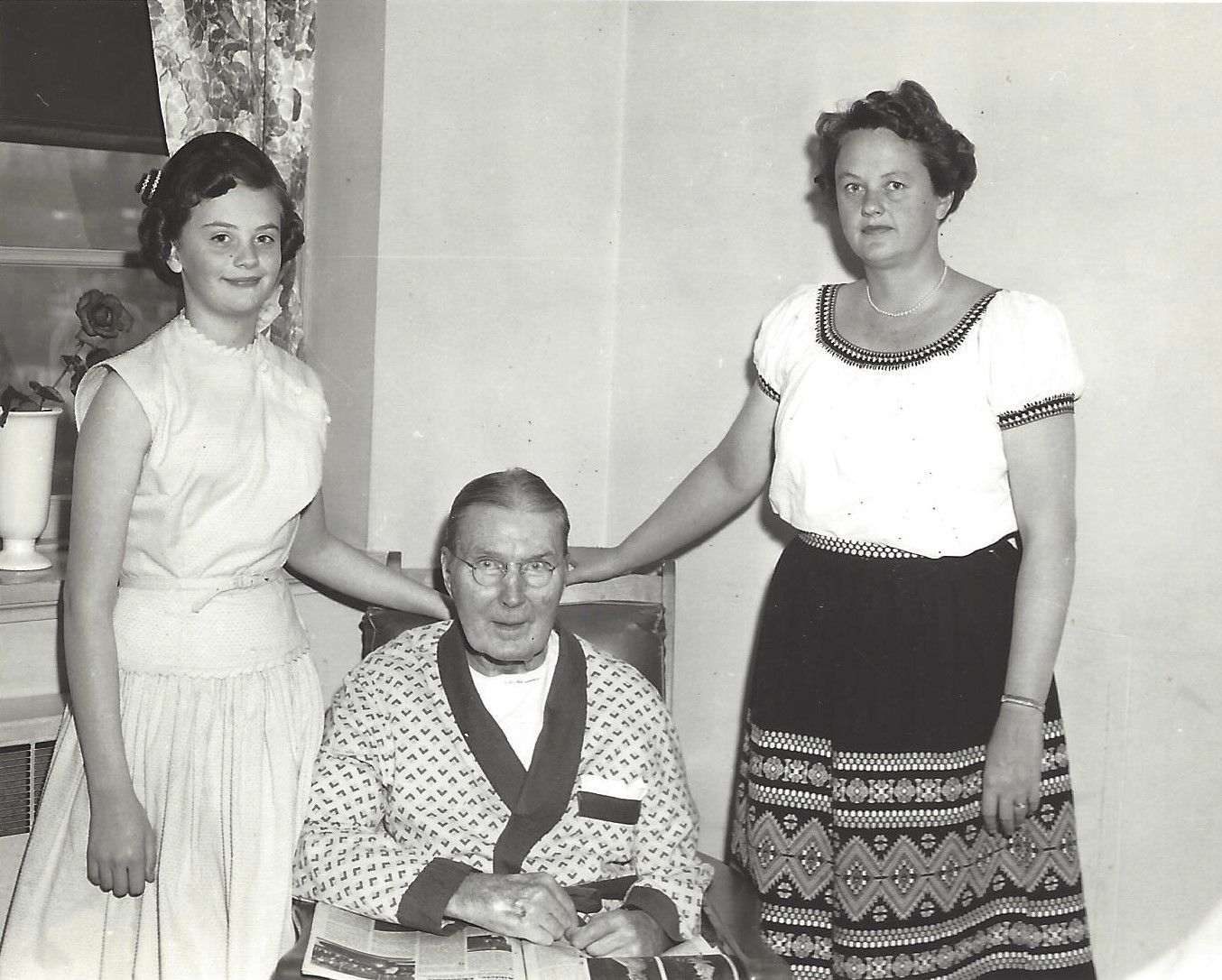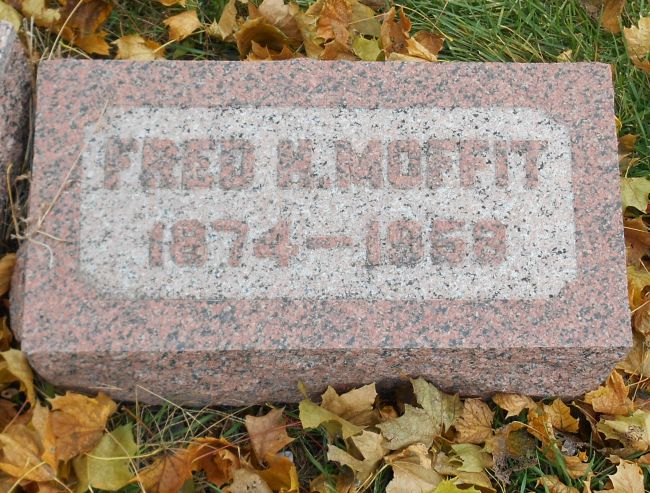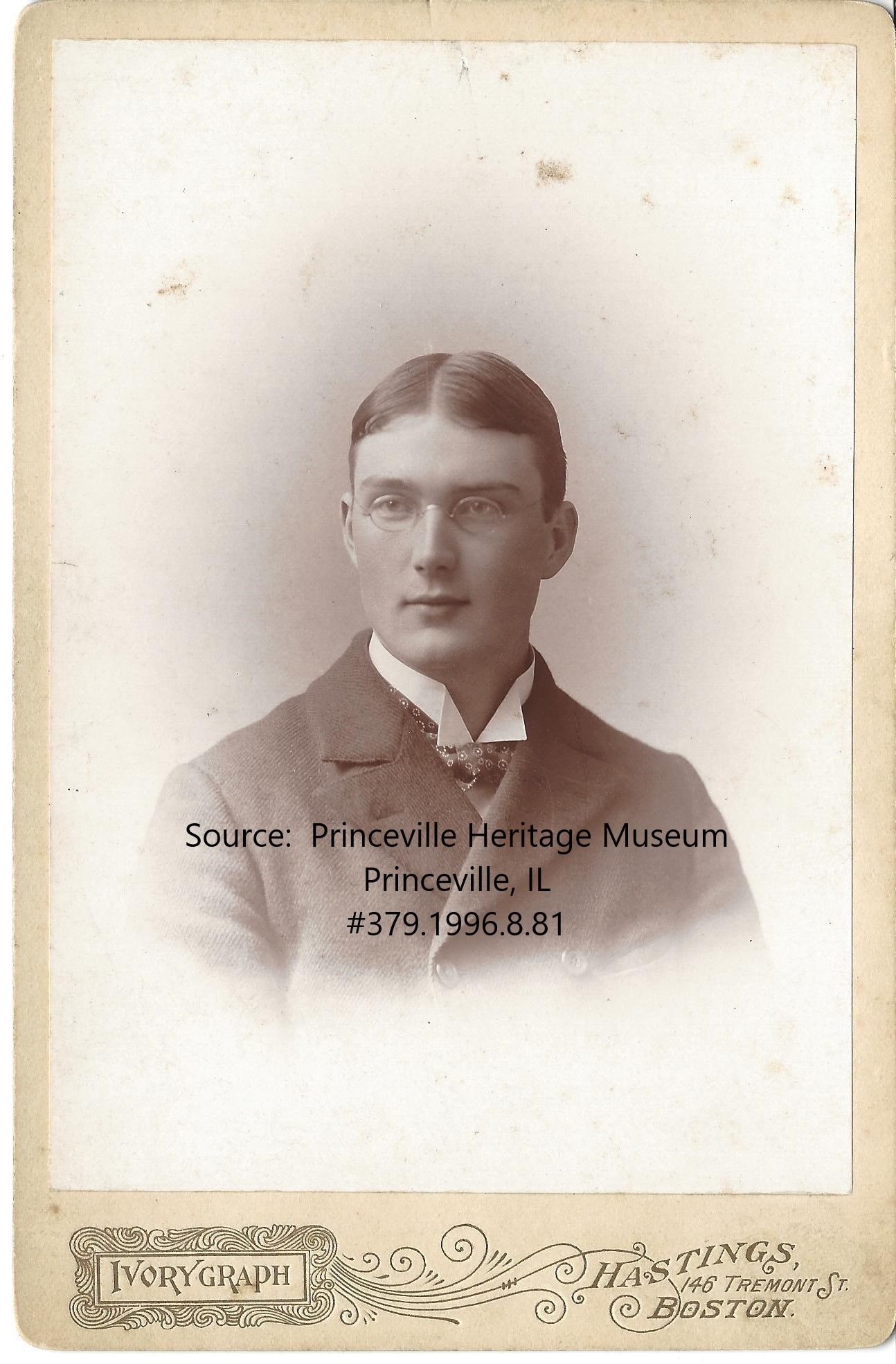Obituary -- Jan 1958, Princeville Telephone:
Fred H. Moffit Was Pioneer In Aerial Mapping Of Areas
Fred H Moffit, 83, who was retired from the Geological Survey in 1915 after a career, which spanned half a century, died January 23, in Georgetown university hospital where he had been a patient for more than four years.
Although best known for more than 50 publications resulting from 38 field seasons of geological working Alaska, Mr. Moffit's greatest scientific contribution is considered by many to the development of several of the fundamental concepts of present day photogrammetry. Mr. Moffit became interested in the development of terrestrial photo mapping techniques upon joining the Geological Survey in 1904, World War I and the development of the airplane cameras as a possible means of speeding mapping of areas considered essential to national security. At the request of the Council of National Defense, studies were initiated by three members of the Geological Survey, Coloney Bagley, Mr. Moffit, and Mr. Mertie, each responsible for a certain phase of the problem. Moffit was the first to devise a method of aerial photos in map making. He was responsible both for the study of the principles involved in and the design of the transforming camera, which photographically corrected tilted photographs in a horizontal plane. Moffit's research in this field between 1916 and 1919 and the training course given by him and his associates to personnel of the Corps of Engineers set the pattern for the development of photogrammetry both in the Army and the Geological Survey for the next decade and more.
In the course of 38 field seasons in Alaska, Moffitt worked in such diverse parts of the Territory as the Nome gold fields of Seward peninsula and the potential petroleum areas on the Alaska peninsula, but his first interest came to be geology of east central Alaska. His last three major publications on the eastern Alaska range, the Copper River basin and the Prince William sound area, represented the compilation and integration of many years of field work. They are today the source reference for the geology of these areas and it will be many years before they are fully superceded by more detailed investigations.
Moffit received his B. A. degree from Williams college in 1895. Beginning that summer he worked as a geological aid with the Geological Survey in the northeastern states for several season while continuing his graduate studies in La Fayette college where he received his M. A. degree in 1899. He was employed at LaFayette as an instructor in mining and engineering school until 1902, meanwhile informally continuing geological studies. One year was spent at Columbia as Fellow in geology and mining. During this period Moffit made a study of the copper deposits at Cobre, Cuba, in preparation for a doctorial thesis but when in May 1903 an opportunity came to join the Alaska work of the Survey as geologist, Moffit entered government service where he remained continuously until his retirement.
Mr. Moffit was a member of the Cosmos club in Washington, where he resided for a number of years. He was a Fellow of the Geological Society of America, an honorary member of the Washington Society of Engineers, and a member of the American Academy for the Advancement of Science, the Society of Economic Geology, the Geological Society of Washington, the American Institute of Mining and Metallurgical Engineers, and the Washington Academy of Sciences.
Mr. Moffit was born in Princeville April 2,1874 and at the time of his death still maintained a home there. He never married and his two sisters and one brother died some years ago. He is survived by two nieces, Mrs. Stella Whittier of Solona Beach, Calif., and Mrs. Louise M. Bean of Rito Linda, Calif., and also a cousin in, Rear Admiral Gilbert J. Rowcliff Ret., Washington, D.C.
The above article on the life of Mr. Moffit was prepared by some of his friends of the Geological Survey in Washington. It is now generally known that Mr. Moffit's help in aerial photography was so highly valued by the Army that he was offered a commission as a Major but he refused it. During World War II he scouted along the Alaskan shoreline with a ship and crew at his service, seeking possible favorably located resources of coal, copper and other metals.
He invariably stopped at his Princeville home on his trip to and from Alaska. He always cast his vote here. As a youth he sang in the Presbyterian choir. Besides his love for the great outdoors, his other interests were in books and fine music. Quiet and unassuming, he was a person, whom it was a privilege to know.
Funeral services were held in Washington January 24 and in Princeville Sunday, January 26. The Princeville services were held in the Bouton Memorial Home with Rev. Ralph Walters in charge. Edward Auten was the organist. Burial was in the Princeville cemetery. Pallbearers were Earl Weaver, Walter Fast, Armond Foster, Sherman Cornish and Harold and Rob ?????.
Obituary -- Jan 1958, Princeville Telephone:
Fred H. Moffit Was Pioneer In Aerial Mapping Of Areas
Fred H Moffit, 83, who was retired from the Geological Survey in 1915 after a career, which spanned half a century, died January 23, in Georgetown university hospital where he had been a patient for more than four years.
Although best known for more than 50 publications resulting from 38 field seasons of geological working Alaska, Mr. Moffit's greatest scientific contribution is considered by many to the development of several of the fundamental concepts of present day photogrammetry. Mr. Moffit became interested in the development of terrestrial photo mapping techniques upon joining the Geological Survey in 1904, World War I and the development of the airplane cameras as a possible means of speeding mapping of areas considered essential to national security. At the request of the Council of National Defense, studies were initiated by three members of the Geological Survey, Coloney Bagley, Mr. Moffit, and Mr. Mertie, each responsible for a certain phase of the problem. Moffit was the first to devise a method of aerial photos in map making. He was responsible both for the study of the principles involved in and the design of the transforming camera, which photographically corrected tilted photographs in a horizontal plane. Moffit's research in this field between 1916 and 1919 and the training course given by him and his associates to personnel of the Corps of Engineers set the pattern for the development of photogrammetry both in the Army and the Geological Survey for the next decade and more.
In the course of 38 field seasons in Alaska, Moffitt worked in such diverse parts of the Territory as the Nome gold fields of Seward peninsula and the potential petroleum areas on the Alaska peninsula, but his first interest came to be geology of east central Alaska. His last three major publications on the eastern Alaska range, the Copper River basin and the Prince William sound area, represented the compilation and integration of many years of field work. They are today the source reference for the geology of these areas and it will be many years before they are fully superceded by more detailed investigations.
Moffit received his B. A. degree from Williams college in 1895. Beginning that summer he worked as a geological aid with the Geological Survey in the northeastern states for several season while continuing his graduate studies in La Fayette college where he received his M. A. degree in 1899. He was employed at LaFayette as an instructor in mining and engineering school until 1902, meanwhile informally continuing geological studies. One year was spent at Columbia as Fellow in geology and mining. During this period Moffit made a study of the copper deposits at Cobre, Cuba, in preparation for a doctorial thesis but when in May 1903 an opportunity came to join the Alaska work of the Survey as geologist, Moffit entered government service where he remained continuously until his retirement.
Mr. Moffit was a member of the Cosmos club in Washington, where he resided for a number of years. He was a Fellow of the Geological Society of America, an honorary member of the Washington Society of Engineers, and a member of the American Academy for the Advancement of Science, the Society of Economic Geology, the Geological Society of Washington, the American Institute of Mining and Metallurgical Engineers, and the Washington Academy of Sciences.
Mr. Moffit was born in Princeville April 2,1874 and at the time of his death still maintained a home there. He never married and his two sisters and one brother died some years ago. He is survived by two nieces, Mrs. Stella Whittier of Solona Beach, Calif., and Mrs. Louise M. Bean of Rito Linda, Calif., and also a cousin in, Rear Admiral Gilbert J. Rowcliff Ret., Washington, D.C.
The above article on the life of Mr. Moffit was prepared by some of his friends of the Geological Survey in Washington. It is now generally known that Mr. Moffit's help in aerial photography was so highly valued by the Army that he was offered a commission as a Major but he refused it. During World War II he scouted along the Alaskan shoreline with a ship and crew at his service, seeking possible favorably located resources of coal, copper and other metals.
He invariably stopped at his Princeville home on his trip to and from Alaska. He always cast his vote here. As a youth he sang in the Presbyterian choir. Besides his love for the great outdoors, his other interests were in books and fine music. Quiet and unassuming, he was a person, whom it was a privilege to know.
Funeral services were held in Washington January 24 and in Princeville Sunday, January 26. The Princeville services were held in the Bouton Memorial Home with Rev. Ralph Walters in charge. Edward Auten was the organist. Burial was in the Princeville cemetery. Pallbearers were Earl Weaver, Walter Fast, Armond Foster, Sherman Cornish and Harold and Rob ?????.
Family Members
Sponsored by Ancestry
Advertisement
Records on Ancestry
Advertisement
